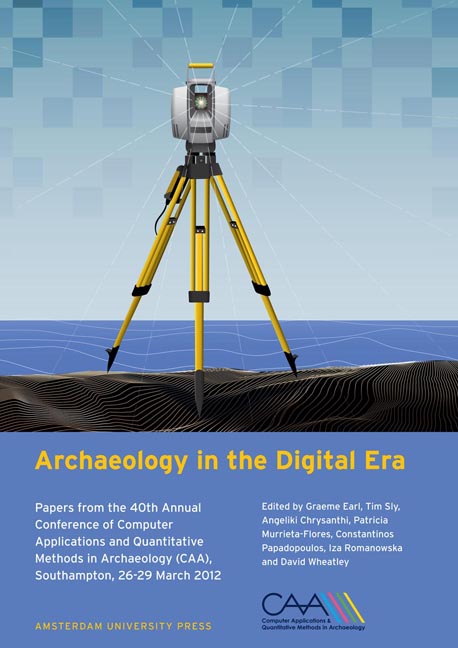 Archaeology in the Digital Era
Archaeology in the Digital Era Using Image Analysis to Match a Coin to a Database
Published online by Cambridge University Press: 16 February 2021
Summary
Abstract:
In this paper we present a method for automatic ancient coin classification based on computer vision. The method takes a coin image as input and finds the most visually similar coin in the database. For this purpose, a flexible and powerful image matching method is used that is able to cope with the possibly large degree of variation between coins of the same type. Our system is evaluated on a dataset containing 24 types of Roman Republican Coins and achieves a classification rate of over 68% on the obverse coin sides and over 73% on the reverse coin sides.
Keywords:
Computer Vision, Ancient Coins, Image Classification
Introduction
Determining the type of an ancient coin is in general a time consuming task and needs a lot of numismatic experience. Therefore, an automatic method for this task would be of high usage for the numismatic community. 2D images can serve as input for such a system as they are easy and cheap to produce and are widely available in museum databases and digital online archives. Potentially, such a methodology is able to act as a supporting tool for numismatists and can thus enable a much faster processing of coins. In the long run, an automatic image based coin classification system could be of use for a broad range of the numismatic community, e.g. by means of a freely accessible online coin classification tool.
This paper presents a method which uses image analysis in order to determine the classes of the coins. We argue to use image matching for this task, as it is able to measure the similarity of coins between images and can consequentiy be used for classification: the method measures the similarity between a coin image and all coin images in the training set (the database) and finally chooses the class with the highest image similarity. We use a flexible image matching method which is able to deal with the local spatial variations of features within a class, i.e., of the kind shown in Figure 1. The method is based on local SIFT features (Lowe, Distinctive Image Features from Sc ale-Invariant Keypoints 201:14) which are extracted on a dense field in the image and matched by means of optimization of a cost function (Liu, Yuen und Torralba 2011).
- Type
- Chapter
- Information
- Archaeology in the Digital EraPapers from the 40th Annual Conference of Computer Applications and Quantitative Methods in Archaeology (CAA), Southampton, 26-29 March 2012, pp. 194 - 198Publisher: Amsterdam University PressPrint publication year: 2014
